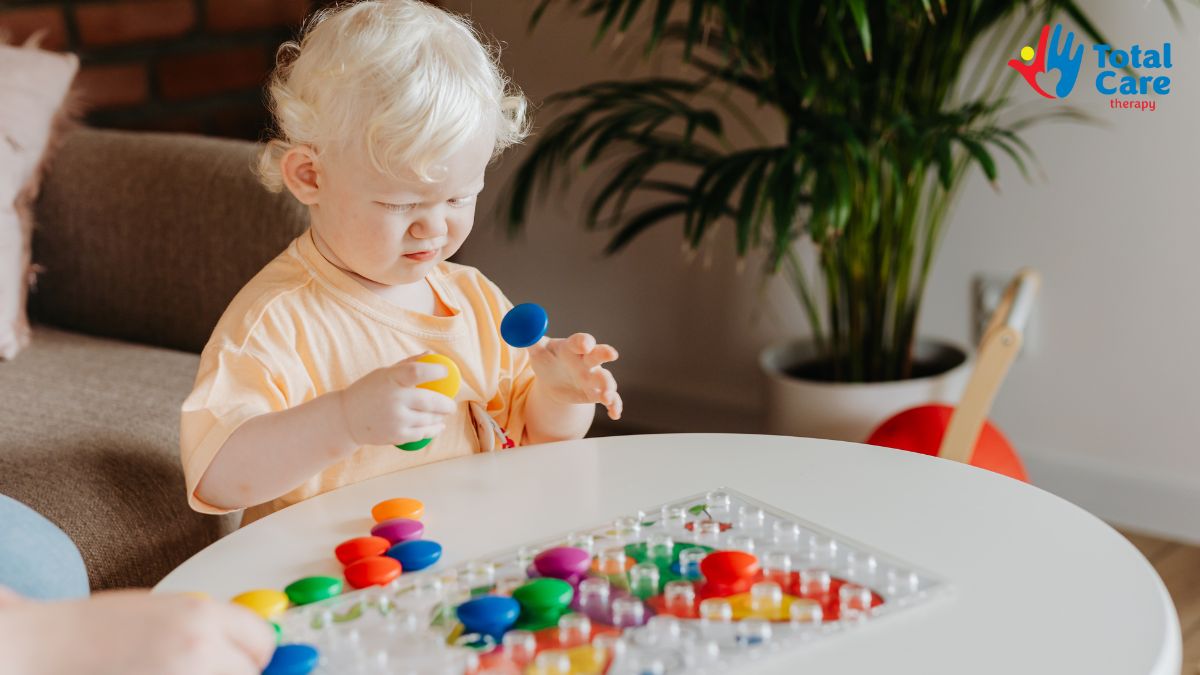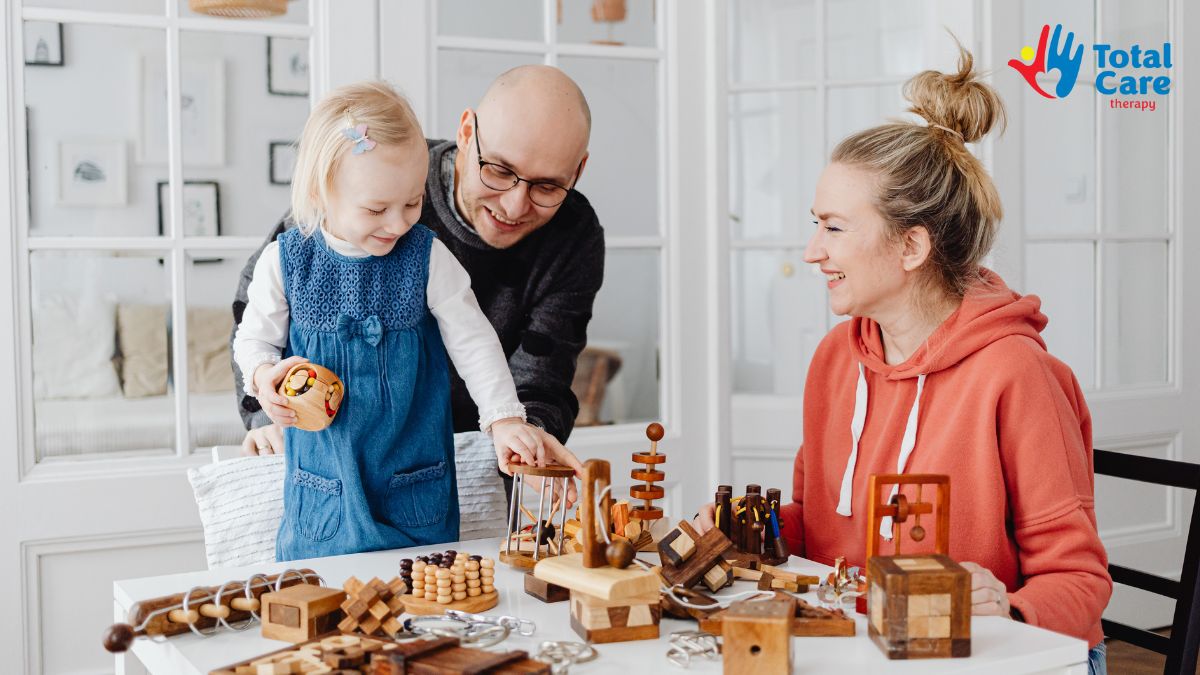90-Day ABA Therapy Progress: Skills Families See First
A 90 day ABA therapy progress helps families track visible gains in communication, routines, and behavior. Use this timeline to understand early ABA milestones.
90-Day ABA Therapy Progress: Skills Families See First
Key Points:
- Families often see early ABA progress in 90 days when therapy is frequent and focused.
- Weeks 0–2 build trust and simple requests; weeks 3–6 add directions and routines; and weeks 7–12 show generalization to home.
- Clear data supports reauthorization and tracks meaningful change.
Short delays in talking, play, or daily routines can feel bigger when therapy has just started. Parents want to know what will show up first and when. A 90 day timeline gives families a way to see how ABA moves from relationship building to actual communication and then to home carryover.
The sections below will walk you through the 12 weeks, tie them to common insurance review points, and show which skills usually show first.

90 Day ABA Therapy Progress: What Does It Usually Include?
ABA moves faster when sessions are frequent and long enough. National guidance has long said young children should receive at least 25 hours per week of intensive, planned activity, because that level of contact creates more chances to reinforce new behavior.
Mentioning this at the start helps families see why 2 to 3 short visits a week will not show the same pace of growth. Most programs use a simple sequence:
- Engage the child. The therapist becomes a person the child likes being with.
- Teach small functional skills. Simple mands such as “open,” “help,” or a point toward a toy.
- Shape cooperation. Follow directions, move to table, return to play.
- Move skills to real life. Caregivers start seeing the same response at home.
An ABA therapy progress report at 90 days should reflect these steps and should connect every goal to the data the therapist has been taking in those sessions through ABA progress tracking methods.
Weeks 0–2: Pairing, Tolerating Sessions, Simple Mands
The first two weeks are about getting the child to stay, enjoy, and ask. If the learner does not like the session, no amount of programming will work. That is why early ABA progress is often social and emotional.
What usually happens in weeks 0–2:
- Pairing with reinforcement. Therapist learns what the child likes and delivers it freely so the room feels safe.
- Tolerating the session space. Child sits or stays in the area for short periods without crying, flopping, or leaving.
- First communication attempts. Simple mands such as “more,” “ball,” “go,” or a PECS exchange appear because the therapist has set up easy wins.
- Short transitions. Child moves from play to a quick task and back to play without a meltdown.
Early on, families can write in a 90 day progress tracker that the child:
- Stayed with the therapist for 5 to 10 minutes.
- Accepted the therapist taking a turn or blocking an unsafe behavior.
- Used at least one clear request during the session.
This is also a good point to mention what to expect in ABA therapy so parents understand that play, short tasks, and reinforcement are all part of therapy, not a distraction from learning.
Weeks 3–6: Daily Routines and 1-Step Directions
By the middle of the first month, the child often knows the therapist, knows the room, and knows the reward patterns. This frees the therapist to teach cooperation.
A 2023 meta-analysis of 11 studies with 632 participants found that comprehensive ABA models improved developmental outcomes when teaching was systematic and repeated, which is exactly what happens in this stage.
Skills families often see in weeks 3–6:
- Compliance with 1-step directions. “Give me the car,” “sit down,” “hands on table.” These are the building blocks for future multistep tasks.
- Routines around snacks, toileting readiness, or cleanup. The therapist chains these structured daily routines for autism so the child succeeds in the same order each session.
- Reduction in obvious problem behaviors. There is less crying when a toy is delayed because the child already knows a request response.
- More trials per session. Because transitions are smoother, the therapist can run the BCBA’s programmed trials closer to the plan.
This is also where “ABA progress” can be shared with caregivers in very concrete terms. Instead of saying, “She is doing better,” therapists can say:
- Followed 10 out of 12 one-step directions
- Transitioned without protest 4 times
- Requested a preferred item 6 times
Families should keep in mind that many programs recommend 25 to 40 hours per week of therapy for young children, and research still describes this intensity as a way to gain faster change. When hours are lower, these week-by-week gains can stretch out.

Weeks 7–12: Generalization and Data for Insurance Review
The last third of the 90 day timeline is where carryover starts. The therapist has enough session data to show that the skill is real. The BCBA can now probe whether it shows up at home or with another caregiver.
Many payer clinical policies require that continuation requests include clear documentation of progress within about 90 days, which is why this stage is tied to reporting.
What weeks 7–12 often target:
- Generalization to parent or sibling. The child makes the same request with Mom that they made with the therapist.
- Use of skills in a new setting following generalization across environments. Kitchen instead of therapy room, car seat instead of therapy table.
- Longer directions. “Get the cup and put it on the table.”
- Reduction of prompts. Therapist fades hand-over-hand or model prompts so the child responds on their own.
At this point, the BCBA can prepare an ABA therapy progress report that includes:
- Baseline vs current data for communication and behavior.
- Graphs that show upward trends.
- Notes on parent training sessions and how the child responded.
- A short explanation of why current goals should continue.
Because many insurers ask for proof of progress every 90 days, having this staged plan makes reauthorization simpler for families.
How Do Families Track a 90 Day Progress Timeline?
A written 90 day ABA therapy progress plan helps parents see where they are. It also keeps the therapist, RBT, and BCBA looking at the same outcomes. Families can build a simple tracker with the week ranges as columns and the target areas as rows.
Here is a simple version:
- Communication row. Weeks 0–2: 1–2 mands. Weeks 3–6: requests in several activities. Weeks 7–12: requests with caregiver at home.
- Cooperation row. Weeks 0–2: sits with therapist. Weeks 3–6: follows 1-step directions. Weeks 7–12: handles multistep tasks.
- Behavior row. Weeks 0–2: reduced crying in session. Weeks 3–6: smoother transitions. Weeks 7–12: fewer prompts needed in home tasks.
- Parent row. Weeks 0–2: watched therapist model. Weeks 3–6: practiced a routine. Weeks 7–12: ran short sessions independently.
A tracker like this aligns well with a “90 day progress tracker” and shows any gaps before insurance review. It also gives a place to record parent training hours aligned with ABA parent training goals, which insurers often like to see listed in the same period. If a child missed several sessions, it will be clear why a goal did not move.

Frequently Asked Questions
How long should a child receive ABA therapy?
Children should receive ABA therapy for several months to several years, depending on age, goals, and progress. Young children often require 25 or more hours per week in intensive programs. Therapy continues while data shows gains in communication, behavior, or daily tasks and families observe real-life improvement.
How many hours of ABA is effective?
ABA is effective at 25 to 40 hours per week for broad skill growth, especially in younger children. Fewer hours may still work when goals are narrow or parents reinforce skills at home. BCBAs determine the exact hours based on medical need and adjust them during reauthorization.
When is a good time to stop ABA therapy?
Stopping ABA therapy is appropriate when goals are met, behaviors are manageable with parent strategies, or progress plateaus despite goal changes. Families and BCBAs should review progress reports to decide on next steps. If insurance sees no progress over 90 days, a lower-intensity model may be recommended.
Start Expert Autism Therapy Services Today
Families who want this kind of clear 90 day ABA therapy progress often do best with a team that pairs quickly, runs enough hours, and shows data in every review. ABA therapy services in Tennessee, New Mexico, Indiana, Georgia, Arizona, North Carolina, Maine, and Utah can give parents a structured start.
Total Care ABA focuses on teaching skills that show up in real homes, not just in the clinic. Parents can expect pairing in the first weeks, goal-focused teaching in weeks 3–6, and generalization in weeks 7–12 so their child’s effort is turning into daily function.
Reach out to schedule an intake, review insurance options, and map your first 90 day timeline with a team that shares each step clearly.








